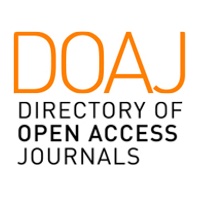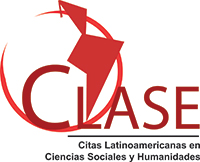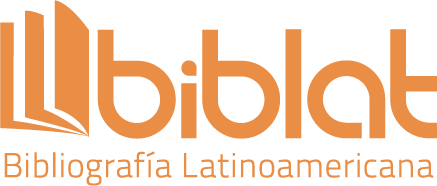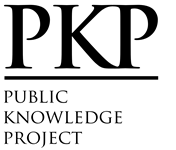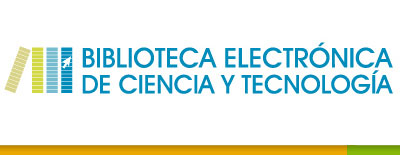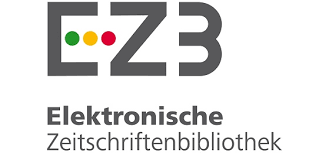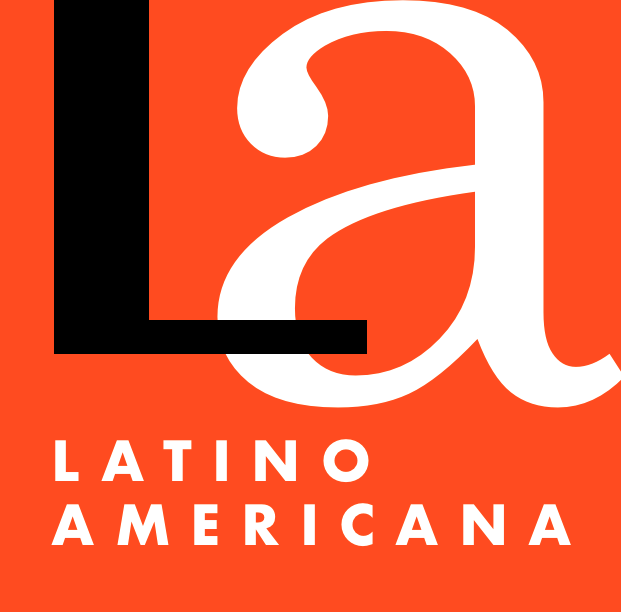Science and Religion in Death-Related Teacher Practice
Abstract
To better understand how teachers navigate secularized educational landscapes when dealing with a topic that extend beyond the epistemological realm of science, this study examined US schoolteachers’ practices when dealing with instructional activities on the topic of death and dying. As part of a contextualized research method, classroom cases were used to elicit teachers’ death-related practices. Participating teachers were asked to comment on four pedagogical scenarios: a cemetery fieldtrip, a visit to a museum featuring an Egyptian exhibit with mummies followed by a discussion about embalming, an ecological project involving data collection and analysis of animal roadkill, and a lobster cookout lesson wherein a lobster is cooked alive. Rather than approaching these death activities in the same manner, teacher practice was highly nuanced, with considerable variation depending on the deceased’s identity (whether human or not) and death’s recency (how recent the dying took place). Teachers resorted to avoidance when dealing with the lobster cookout and the cemetery fieldtrip. Reflective of prevalent social representations of science and religion as separate and battling endeavors, teacher avoidance enforced epistemological singularity through preclusion of student exposure to non-scientific ways of knowing death. In contrast, teachers favored neutrality and experiential vicariousness (indirectness) when managing the discussion about mummies and the roadkill investigation. Consistent with social representations of science and religion as dialogic and interacting enterprises, these latter practices showed potential for creating holistic educational spaces for student exposure to epistemically diverse ways of knowing death beyond science. Implications for the pedagogical promotion of youth flourishing and prevention of death anxiety and fear in secularized educational contexts are considered.
Downloads
References
Aechtner, T. (2020). Media and science-religion conflict: Mass persuasion in the evolution wars (1st ed.). Routledge.
Aghababaei, N. (2016). Scientific faith and positive psychological functioning. Mental Health, Religion & Culture, 19(7), 734–41.
American Psychological Association (APA) (2004). Violence in the media: Psychologists help protect children from harmful effects. Retrieved on August 20th, 2012 from website: http://www.apa.org/research/action/protect.aspx.
Barbour, I.G., (1966). Issues in science and religion. Vantage.
Barnes, E., & Oliveira, A.W. (2018). Teaching scientific metaphors through informational text read-alouds. The Reading Teacher, 71(4), 463-472.
Bernard, H.R. (2002). Research methods in anthropology: Qualitative and quantitative approaches (5th ed). Alta Mira Press.
Catto, R. A., Jones, S., Kaden, T., & Elsdon‐Baker, F. (2019). Diversification and internationalization in the sociological study of science and religion. Sociology Compass, 13(8). https://doi.org/10.1111/soc4.12721.
Day, J. (2014). "Thinking makes is so": Reflections on the ethics of displaying Egyptian mummies. Papers on Anthropology, XXIII (1), 29–44.
Desmond J (2013) Requiem for roadkill: Death and denial on America’s roads. In H. Kopnina & E. Shoreman-Ouimet (eds), Environmental anthropology: Future directions (pp. 46–58). Routledge.
Donnelly, D. (2006). Patience, compassion, hope and the Christian Art of dying well [book review]. Theological Studies, 67(1), 208-209.
Easley, L.M. (2005). Cemeteries as science labs. Science Scope, 28-32.
Elsdon-Baker, F., Leicht, C., Mason-Wilkes, W., Preece, E., & Piggot, L. (2017). Science and religion: Exploring the spectrum: Summary report of preliminary findings for a survey of public perspectives on evolution and the relationship between evolutionary science and religion. Newman University and YouGov. https://sciencereligionspectrum.org/wp-content/uploads/2017/09/SRESYouGov-survey-preliminary-findings-5.9.17.pdf.
Eisner, E.W. (1985). Learning and teaching the ways of knowing. University of Chicago Press.
Emerson, R.M., Fretz, R.I., & Shaw, L.L. (1995). Writing ethnographic fieldnotes. University of Chicago Press.
Fauske, R.H. (2023). Gravestones, zombies and dead siblings: graveyards as artefacts for children’s existential questions. European Early Childhood Education Research Journal, 31(2), 147-161.
Fernández-Alcántara, M., de Los Santos-Roig, M., Pérez-Marfil, M.N., Cruz-Quintana, F., Vázquez-Sánchez, J. M., & Montoya-Juárez. R. (2021). A new instrument to assess children’s understanding of death: Psychometrical properties of the EsCoMu scale in a sample of Spanish children. Children, 8, 125, https://doi.org/10.3390/children8020125.
Fitz-Herbert, A.L., Rivera, R., Ketelhohn, F., & Elsdon-Baker, F. (2023). Conflict narrative, stigmatisation and strategic behaviour of religious scientists in the Argentinean scientific field. Acta Sociologica, 67(2), 149-163. https://doi.org/10.1177/00016993231173292.
García Cuadrado, J.A. (2019). Antropología filosófica: Una introducción a la filosofía del hombre (7th edition). EUNSA.
Glaser, B.G., & Strauss, A.L. (1967). The discovery of grounded theory: Strategies for qualitative research. Aldine.
Goodwin, C., & Davidson, P. M. (1991). A child’s cognitive perception of death. Early Childhood Education Journal, 2, 21–24.
Jenkins, T. (2011). Contesting human remains in museums: The crisis of cultural authority. Routledge.
Johnson, K.A., Okun, M.A., & Moon, J.W. (2023). The interaction of faith and science mindsets predicts perceptions of the relationship between religion and science. Current Research in Ecological and Social Psychology, 4 (100113), 1-7.
Kearl, M.C. (1989). Endings: The sociology of death and dying. Oxford University Press.
Ketchel, J.A. (1986). Helping the young child cope with death. Day Care and Early Education, 14, 24-27.
Koballa, T.R., & Tippins, D.J., (2004). Cases in Middle and Secondary Science Education: The Promise and Dilemmas (2nd Ed.). Pearson Merrill Prentice Hall.
Kronaizl, S.G. (2019). Discussing death with children: A developmental approach. Pediatric Nursing, 45(1), 47-50.
Lakoff, G., & Johnson, M. (1999). Philosophy in the flesh: The embodied mind and its challenge to western thought. Basic Books.
Lakoff, G., & Turner, M. (1989). More than cool reason: A field guide to poetic metaphor. University of Chicago Press.
Las Heras, M., Grau-Grau, M., & Rofcanin, Y. (2023). Human flourishing: A multidisciplinary perspective on neuroscience, health, organizations and arts. Switzerland: Springer.
Latour, B. (1993). We have never been modern. Harvard University Press.
Leggo, C. (1998). Living un/grammatically in a grammatical world: The pedagogic world of teachers and students. Interchange, 29(2), 169-184.
Levering, M. (2018). Dying and the virtues. Eerdmans.
Longbottom S, & Slaughter V. (2018). Sources of children’s knowledge about death and dying. Philosophical Society Transactions of the Royal B, 373, 20170267.
Miller, J. P. (1986). Atomism, pragmatism, holism. Journal of Curriculum & Supervision, 1(3), 175–196.
Miller, R. (1997). What are schools for?: Holistic education in American culture. Holistic Education Press.
Moore, C. & Huber, R. (2009). Roadkill data analysis: Using spreadsheets to integrate math and science. Science Scope, 26-29.
Moscovici, S. (2000). Social representations: Exploration in social psychology. Polity Press.
O’Callaghan P. (2004). La muerte y la esperanza. Palabra.
O’Callaghan P. (2009). La muerte y la inmortalidad. In J.A. Mercado & F. Labastida (Eds.), Philosophica: Enciclopedia filosófica on line, http://www.philosophica.info/archivo/2009/ voces/muerte-inmortalidad/Muerte-inmortalidad.html.
Oliveira, A.W., Reis, G., Chaize, D.O., & Snyder, M.A., (2022). Death of an elementary classroom pet: Possibilities for science and environmental education. In J. Rink, A.A.Viveiro, M.E. de Andrade, & A.S. Neto (Eds), Pesquisas e Experiências em Ensino de Ciências e Educação Ambiental (trans. Research and Experiences in Science and Environmental Education) (pp. 68-90). Edições Hipótese.
Oliveira, A.W., Reis, G., Chaize, D.O., & Snyder, M.A. (2014). Death discussion in science read-alouds: Cognitive, sociolinguistic, and moral processes. Journal of Research in Science Teaching, 51(2), 117-146.
Olsson, L.M. (2013). Taking children’s questions seriously: The need for creative thought. Global Studies of Childhood, 3(3), 230-253.
Paryente, B., & Gez-Langerman, R. (2023). Kindergarten children’s reactions to the COVID-19 pandemic: Creating a sense of coherence. Journal of Early Childhood Research, 21(2) 133–146.
Pieper J. (1999). Death and immortality. St. Augustines Press.
Polo, L. (1993). Quién es el hombre. Un espíritu en el mundo (2nd ed.). Alcalá: Ediciones Rialp.
Pompele, S., Ghetta, V., Veronese, S., Mihaela Dana Bucuță, M.D., & Testoni, I. (2022). Pastoral Psychology, 71, 257–273.
Renaud, S., Engarhos, P., Schleifer, M., & Talwar, V. (2013). Talking to children about death: Parental use of religious and biological explanations. Journal of Psychology and Christianity, 32(3), 180-191.
Renaud, S.J., Engarhos, P., Schleifer, M., Talwar, V. (2015). Children’s earliest experiences with death: Circumstances, conversations, explanations, and parental satisfaction. Infant and Child Development, 24, 157–174.
Ristiniemi, J., Skeie, G., & Sporre, K. (2018). Challenging life: Existential questions as a resource for education. Waxmann.
Robson, C. (2002). Real world research (2nd ed). Blackwell Publishing.
Sayer, D. (2010). Ethics and burial archaeology. Duckworth
Schafer, Z., & Scharmann, L.C. (2022). Understanding "death": Creating student opportunities for meaningful emotional expression in the science classroom. The Science Teacher, 38-41.
Schulman, J.H. (1992). Toward a pedagogy of cases. In J. Schulman (Ed.), Case methods in teacher education (pp. 1-30). Teacher College Press.
Segall, A., & Burke, K. (2013). Reading the bible as a pedagogical text: Testing, testament, and some postmodern considerations about religion/the bible in contemporary education. Curriculum Inquiry, 43(3), 305-331.
Snowden, J.H. (1917). The scientific spirit in theological study and teaching. The Biblical World, 49(5), 275-280.
Solomon, R.C., & Higgins, K.M. (2006). The big questions: A short introduction to philosophy (8th edition). Wadsworth.
Stenmark, M. (2004). How to relate science and religion: A multidimensional model. William B. Eerdmans Publishing Company.
Su-Russell C., Russell L.T., Ermer A.E., Greiner C., & Gregory R. (2021). Parents’ anticipated discussion about death with young children. OMEGA—Journal of Death and Dying, 1-22.
Tenzek, K.E., & Nickels, B.M. (2017). End-of-life in Disney and Pixar films: an opportunity for engaging in difficult conversation. Omega, 50, 267–280.
Tippins, D.J., Koballa, T.R., & Payne, B.D. (2002). Learning from cases: Unraveling the complexities of elementary science teaching. Allyn & Bacon.
Tiso F.T., & O’Callaghan P. (2010). Death. In M. Baumann & G. Melton (Eds.), Religions of the world: A comprehensive encyclopedia of beliefs and practices (pp. 866 – 874). ABC-CLIO.
Vogt, C.P. (2004). Patience, compassion, hope, and the Christian art of dying well. Rowman & Littlefield.
Westmoreland, P. (1996). Coping with death: Helping students grieve. Childhood Education, 72, 157-160.
Wiggins, G., & McTighe, J. (2005). Understanding by design (2nd edition). Association for Supervision and Curriculum Development.
Witz, K., & McGregor, N. (2003). Morality, spirituality and science in the elementary classroom. In D. L. Zeidler (Ed.), The role of moral reasoning and discourse on socioscientific issues in science education (pp. 165-182). Kluwer Academic Press.
Yepes. R. (1996). Fundamentos de antropología: Un ideal de la excelencia humana. EUNSA.
YOUCAT Foundation (2018). YOUCAT for kids: Catechism of the Catholic Church for children and their parents. Catholic Truth Society.
Zanetti, L. (2020). Why am I here? The challenges of exploring children's existential questions in the community of inquiry. Childhood & Philosophy, 16, 01-26.
Copyright (c) 2025 Alandeom Wanderlei de Oliveira, Javier Pérez Wever, Carmen Camey Marroquín, Antonio Miron

This work is licensed under a Creative Commons Attribution-NonCommercial-ShareAlike 4.0 International License.
The authors retain the copyright and guarantee the journal the right to be the first publication of the work. In case that a translation of the article already published in Austral Comunicación can be published in another journal, it is requested to record the original publication in the translated version.
The license used is CC BY-NC-SA, which allows sharing (copying and redistributing the material in any medium and format) and adapting (remixing, transforming and building on the material) under the following terms: attribution (acknowledge authorship) and non-commercial (the material cannot be used for commercial purposes). Update: February 1, 2022.
Austral Comunicación allows the author (s) to retain the publication rights without restrictions.










